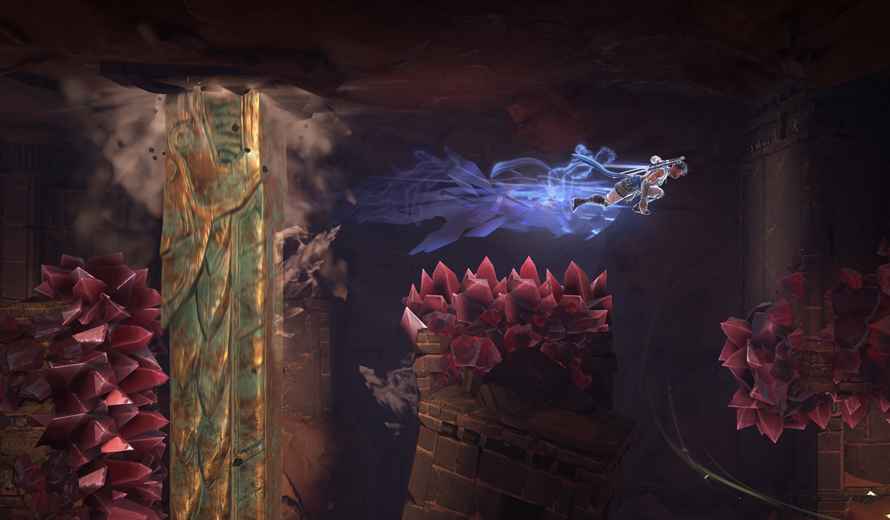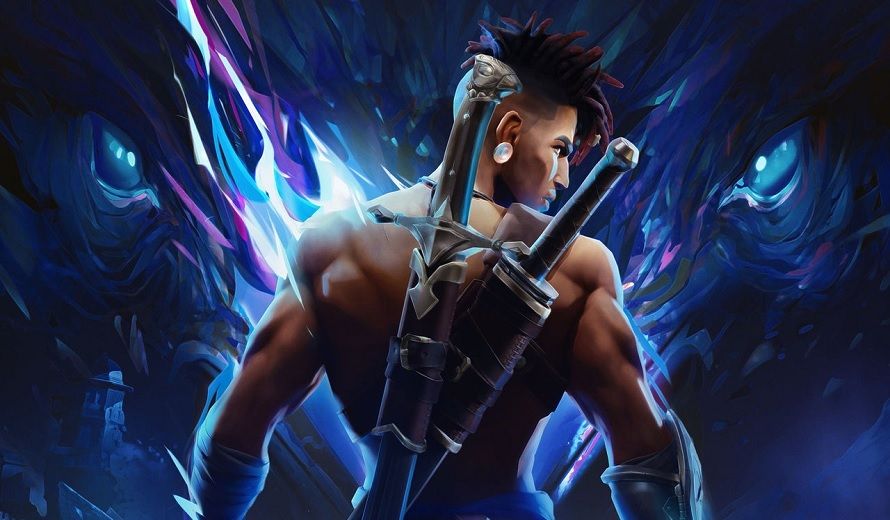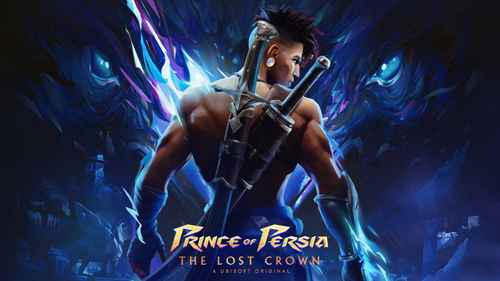Prince of Persia: The Lost Crown Review
Nostalgia is tricky business, especially when it comes to video games. For many of us, games helped define a particular stage, age or time in our lives. More often than not, though, going back and playing an old, beloved game is disappointing. We’re older. Tech is newer. For many gamers, the Prince of Persia franchise — especially the trilogy of action adventure RPGs — is a sacred treasure trove of fond memories, ripe for a remake or refresh. It may come as a shock or disappointment that Prince of Persia: The Lost Crown sidesteps expectations for another mainstream entry, refresh or reboot. Instead, it returns to the series’ 2D, 1989 platforming roots. It’s a bold, risky move if nothing else. Let’s see if it pulls off the hat trick of satisfying longtime fans and welcoming newcomers.
Change of Genre
The best Prince of Persia games were action adventures with outstanding production values, at least for the time. Unlike the three games of the beloved trilogy —Sands of Time, Warrior Within and The Two Thrones — the Lost Crown is a 2.5D Metroidvania with all the trappings of the genre. It’s a form that has exploded with excellent games over the past several years, including Dead Cells, Hollow Knight, Salt and Sanctuary and Blasphemous 1 and 2, just to name a few. But bucking some other platforming trends, The Lost Crown is not a roguelike, it isn’t procedurally generated nor does it borrow too heavily from Dark Souls-like combat.
Rather than focusing its narrative on the Prince from earlier titles, The Lost Crown introduces a new hero, Sargon. Sargon is the youngest of the Immortals, a group of elite warriors and siblings tasked with protecting Persia. One day, the Queen’s son, Prince Ghassan, is abducted. Your quest, the engine driving the substantial story, is to rescue the Prince while exploring Mount Qaf. It’s a land of a dozen different biomes, cursed by monsters, fierce enemies and creatures and bosses inspired by Persian mythology. It takes a good long while for the Immortals to have more than an expository role, just appearing to point Sargon to the next area and quest objective.

Combat at the Core
Despite its large cast of characters, The Lost Crown’s story is not initially compelling. The Immortals are meant to be a Marvel-like collection of superheroes but their importance isn’t always clear. For a long time, it’s unclear who the antagonist actually is or that there is more to the story than a 20+-hour rescue mission. The narrative eventually picks up steam, but I grew impatient with it more often than not. But then, The Lost Crown is not the first action platformer to have a somewhat uninspired story. There’s much better news elsewhere.
Although it doesn’t do much of anything to re-invent the 2D action genre, The Lost Crown’s exploration, movement and combat form the game’s generally engaging core. A lot of well-thought out and well-executed systems define the game play. There are many ways to tailor the experience, too, both in terms of exploration and combat. Fans of Metroidvanias have seen nearly all these mechanics before, but hey, remixing familiar ingredients never stopped Taco Bell.
At the beginning, Sargon has a typically restricted number of options: limited healing, dual blades, a simple block/parry, a slide or dodge and a single meter-based special ability called an Athra Surge that packs a punch. As he progresses through the story, Sargon adds to his arsenal with a multifaceted bow, dozens of amulets that buff Sargon’s abilities and ten different Athra Surges. The Two Crowns doles out new moves, weapon upgrades and powers at a pretty leisurely pace. The Lost Crown definitely doesn’t front-load all the good stuff.

Overall, combat flows well and is the most enjoyable aspect of The Lost Crown. Weaving together combos, Athra Surges and Sargon’s athletic parkour movements is a lot of fun, and everything connects as it should. The game does an excellent job of introducing new enemies in each of its biomes, and while some levels featured long treks between save points, enemies never felt too repetitive.
Branching Paths
A core mechanic of Metroidvanias is locking items, treasure and secret areas away until a character gains specific abilities. It’s a big part of The Lost Crown as well. One appreciated feature — and a genuine innovation for the genre — is the ability to place screenshots of various important locations on the map for later reference. It’s a small thing but welcome, as simply dotting the sprawling map with icons doesn’t always jog the memory.
Level design is a slightly mixed bag. On one hand, platforming sections, traps and enemy placement are logical, varied and challenging, with lots of secrets, lore and treasure to find. But there are also some uneventful sections with nothing much to see or do. Maybe most frustrating is the inconsistent placement of save points. In some areas of the game, they come thick and fast. In others, they are widely spaced, necessitating long return runs. Later shortcuts and the ability to fast travel helps. In general, though, The Lost Crown’s pacing is very good.
One area in which The Lost Crown really shines is accessibility. There are lots of ways to customize playing the game, from fine-tuning difficulty to warping past tricky platforming puzzles entirely. As someone who is easily frustrated by timing-based platforming, this is a welcome concession that I’ll admit I used on occasion. At its higher difficulty settings, and without the assistance of its guided mode The Lost Crown is very challenging.

Stylish Action
While it looks nothing like prior mainline Prince of Persia games, The Lost Crown’s stylized art is colorful, detailed and appealing. There are a dozen distinct biomes. The game’s lighting, spell effects and combat animations are impressive and movement in general is fluid. With its target platform being the aging Nintendo Switch, it’s probably unsurprising that The Lost Crown runs effortlessly on current gen consoles.
Gareth Coker’s musical score does an excellent job of setting the exotic Persian scene, with colorful textures that underscore exploration and combat. I appreciated that, unlike in some action games, the music wasn’t omnipresent. It trusts its environmental audio to create interesting soundscapes that don’t rely on music. The game’s voice acting was fine if not always especially distinctive. The same-y sounding actors was one of reasons I had a hard time remembering the characters.
Its Own Thing
Does The Lost Crown feel like a legit Prince of Persia game? That’s a complicated question. Gamers looking for the next chapter of the storied action franchise and resistant to change won’t think so. The Lost Crown is a stylish, if not necessarily groundbreaking, Metroidvania first and foremost. While they’re definitely more than window dressing, the Prince of Persia elements are secondary enough to make The Lost Crown feel more like a spinoff or side project while gamers wait for “the real thing.”

Setting aside the expectation that The Lost Crown is the next mainline Prince of Persia title will help players appreciate the game for what it is. The Lost Crown is a fun and engaging 2.5D action platformer. It borrows a number of mechanics from several years’ worth of recent Metroidvanias, but adds a few ideas and quality of life features of its own, too. Maybe best of all, it’s a game for both newcomers and Metroidvania veterans. Accept it for what it is and The Lost Crown is a solid and well-made game, with excellent mechanics, plenty of content and challenge.
***PS5 code provided by the publisher for review***
The Good
- Tight combat
- Polished movement
- Beautiful art
- Difficulty options
The Bad
- Prince of Persia elements are window dressing
- Some bosses are unimpressive
- Uneven level design

